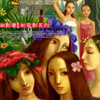How prince's palace became home to the gods
Updated: 2008-06-16 10:24

Yonghegong, or the Lama Temple, has always been one of Beijing's premier tourist attractions. Its central location in the capital ensures its high position on every tour group's itinerary. Its classic Chinese design features also make it picture-perfect for a busy visitor seeking old-school Beijing snapshots.
Yonhegong is about to become even more popular thanks to the Olympics. The Games cycling road race will whiz past the complex, as international TV commentators explain the background of this interesting architecture.
Before it was a Tibetan Buddhist temple, Yonghegong was one of China's largest-ever homes. It was a palatial residence built in 1694 by Qing Emperor Kangxi for his fourth son, Prince Yinzhen, who later succeeded the throne to become Emperor Yongzheng.
After Yongzheng's death in 1735, his coffin was placed in the temple. Emperor Qianlong, his son, granted the temple imperial status, replacing its turquoise roof tiles with yellow tiles, which were reserved only for the emperor.
Later, it became home to many Tibetan Buddhist monks from Mongolia and Tibet and also the national center of Lama administration. It is a famous temple of the Yellow Hat Sect of Lamaism.
The Lama Temple features five large halls and five courtyards with decorative archways, upturned eaves and beautiful details. The halls include sculptured images of gods, demons, Buddhas, as well as Tibetan-style Tangkha paintings.
In one hall stand statues of the Maitreya Buddha and the four Heavenly Kings. The Hall of Harmony and Peace houses statues of the Buddhas of the Three Ages (Past, Present and Future) and of 18 Arhats. Many of these important artifacts date back to the 1500s and were gifts from senior Tibetan monks to the Emperor.
Inside the Hall of Everlasting Protection, where Yongzheng's coffin was stored before being moved to the imperial cemetery in Yixian county of Hebei province, devotees pray to a statue of the Healing Buddha.
Inside the Hall of The Wheel of Law stands a statue of Je Tsongkhapa, founder of the Geluk (or Yellow Hat) school of Buddhism. The hall also houses the Five Hundred Arhats Hill, made of dark red sandalwood.
One of the most impressive sights is the 18m-high Buddha statue carved entirely out of sandalwood in Wanfu (10,000 Happinesses) Pavilion. It was listed 100 or so years ago in the Guinness Book of Records as the biggest wood-carved Buddha in the world.
There are also many stone lion statues that signify the Imperial family connection. But most interesting are the characters personally brushed by Emperor Qianlong explaining the traditional and historical reasons why former dwellings of members of the imperial family must be converted into temples.
Visitors enter the complex via the wide road along which emperors once drove in their carriages during the Qing Dynasty (1644-1911).
(China Daily 06/16/2008 page10)
|
||
|
||
| Eating out:
Arriba arrives in the Wu
Bars&Cafes: Mare's milk a-go-go Weekend&Holiday: How prince's palace became home to the gods Shopping: Jimmy Choo comes What's on: New shows on stage |
|
||
| Eating out:
Moroccan roll
Bars&Cafes: A boonna in training Weekend&Holiday: Pop power Shopping: LV boutique in E. China closed for disqualification What's on: Jazz-infused journey through Kunqu Opera |

